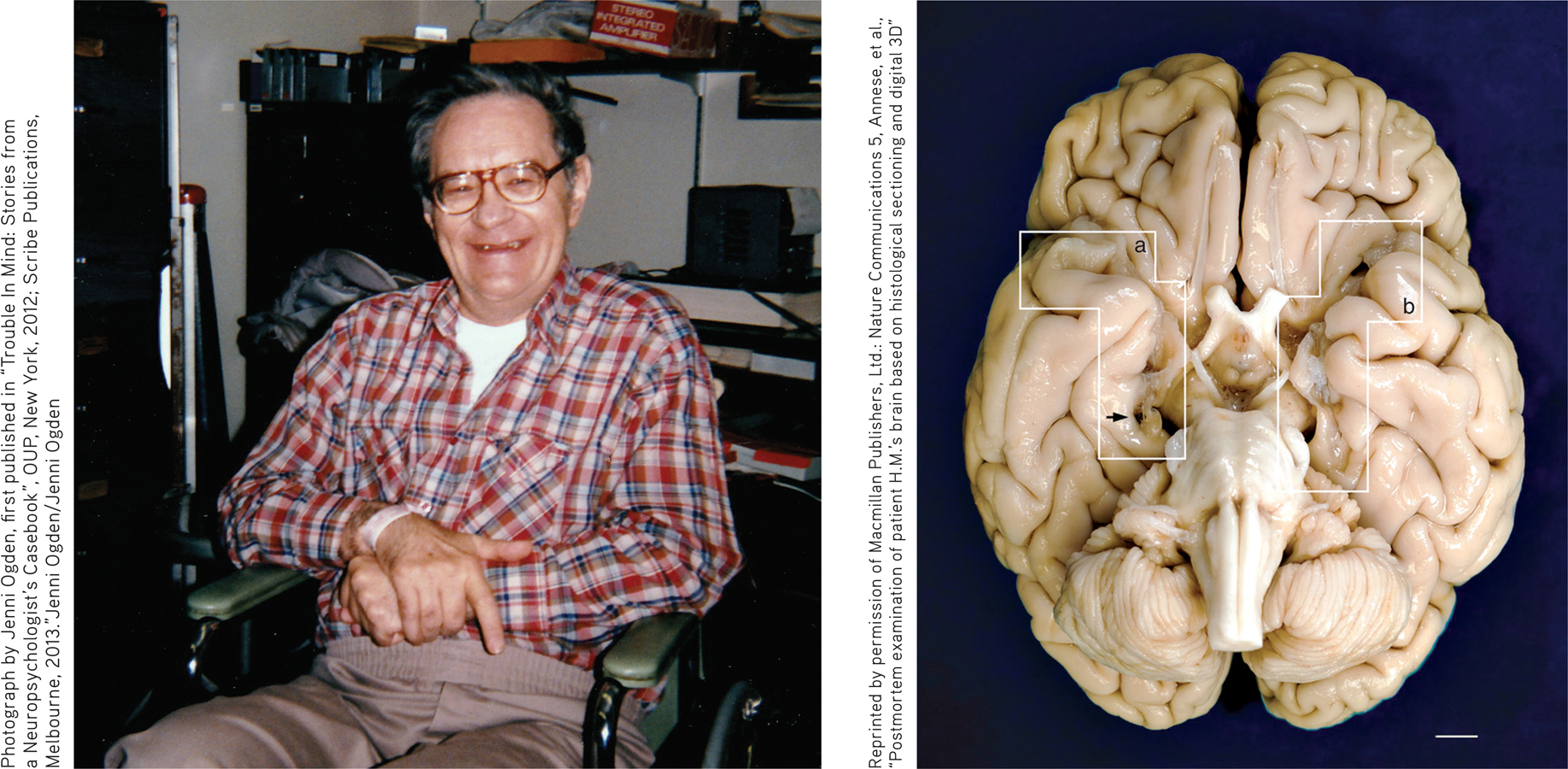
Henry Gustav Molaison: The Real H.M. (1926–
Because of the profound anterograde amnesia caused by the surgery, Henry became one of the most intensive case studies in psychology and neuroscience. Over the next half century, Henry participated in hundreds of studies that fundamentally altered the scientific understanding of memory.
Henry died on December 2, 2008, but his contributions to science continue. Neuroscientist Jacopo Annese and his team (2014) dissected Henry’s brain, slicing it into 2,400 micro-thin slices in a marathon, 3-day session that was streamed online. Photographs of each slice were taken to create a virtual 3-D digital model of Henry’s brain. The white boxes (a) and (b) show where portions of the hippocampus and amygdala on the left and right side of Henry’s brain were removed. The researchers also discovered a previously unknown small lesion on Henry’s left frontal lobe, which they speculate is probably scar tissue from the original surgery. You can watch a short video of the dissection at http://thebrainobservatory.ucsd.edu/hm_live.php
Because of the profound anterograde amnesia caused by the surgery, Henry became one of the most intensive case studies in psychology and neuroscience. Over the next half century, Henry participated in hundreds of studies that fundamentally altered the scientific understanding of memory.
Henry died on December 2, 2008, but his contributions to science continue. Neuroscientist Jacopo Annese and his team (2014) dissected Henry’s brain, slicing it into 2,400 micro-thin slices in a marathon, 3-day session that was streamed online. Photographs of each slice were taken to create a virtual 3-D digital model of Henry’s brain. The white boxes (a) and (b) show where portions of the hippocampus and amygdala on the left and right side of Henry’s brain were removed. The researchers also discovered a previously unknown small lesion on Henry’s left frontal lobe, which they speculate is probably scar tissue from the original surgery. You can watch a short video of the dissection at http://thebrainobservatory.ucsd.edu/hm_live.php
Photograph by Jenni Ogden, first published in “Trouble In Mind: Stories from a Neuropsychologist’s Casebook”, OUP, New York, 2012; Scribe Publications, Melbourne, 2013.”Jenni Ogden/Jenni Ogden
Reprinted by permission of Macmillan Publishers, Ltd.: Nature Communications 5, Annese, et al., “Postmortem examination of patient H.M.’s brain based on histological sectioning and digital 3D”
Reprinted by permission of Macmillan Publishers, Ltd.: Nature Communications 5, Annese, et al., “Postmortem examination of patient H.M.’s brain based on histological sectioning and digital 3D”